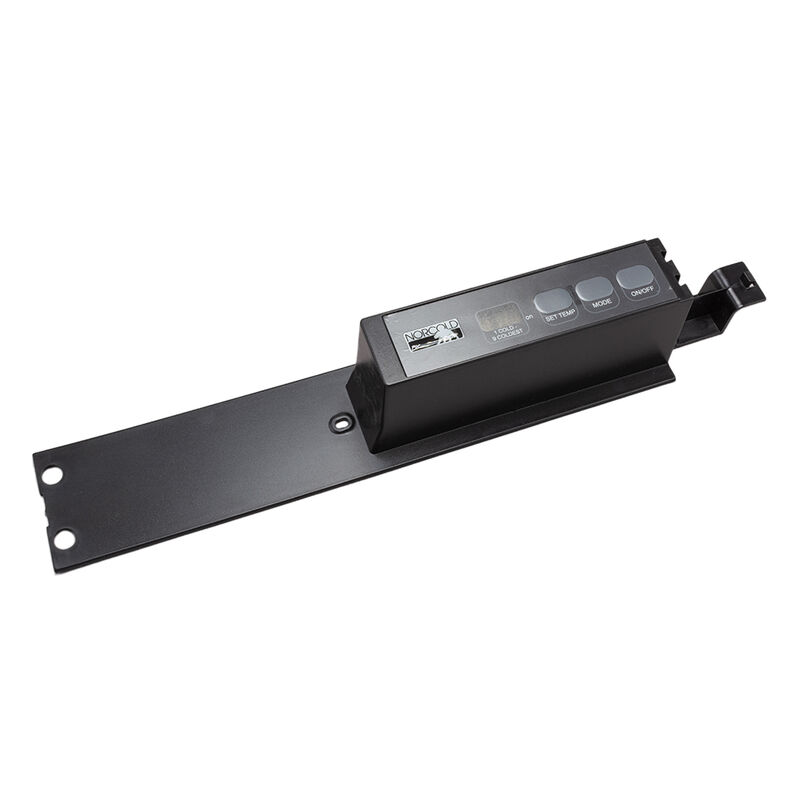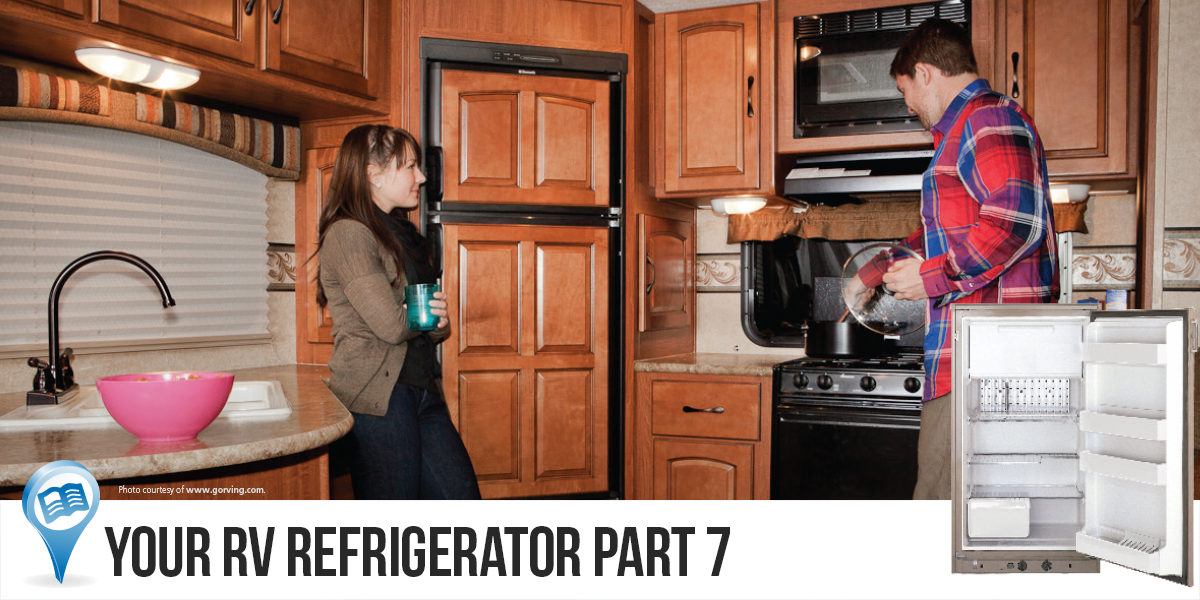To adjust the Norcold RV refrigerator settings from 1 to 9, simply rotate the temperature dial accordingly. The settings range from coldest at 9 to warmest at 1 for optimal cooling performance.
A well-functioning RV refrigerator is essential for keeping perishable items fresh during camping trips or travel. Properly setting the temperature ensures food safety and longevity of your supplies. Understanding how to adjust the settings allows you to customize the cooling level based on your specific needs and environmental conditions.
With the right settings, you can maximize the efficiency of your Norcold RV refrigerator and enjoy worry-free travels with properly preserved food items on hand.


Credit: www.yumpu.com
Understanding Norcold Rv Refrigerators
Understanding Norcold RV Refrigerators:
Key Features
Norcold RV Refrigerators offer a range of features catering to the specific needs of RV owners:
- 9-level temperature control settings for precise cooling adjustments
- Efficient and reliable cooling performance
- Ample interior storage space for groceries and beverages
- Versatile layout options for customizable storage solutions
- Energy-efficient operation for prolonged usage on the road
Benefits For Rv Owners
Owning a Norcold RV Refrigerator brings several advantages to RV owners:
- Convenience of adjusting cooling levels from 1 to 9 to suit varying storage needs
- Reliable cooling performance ensuring food preservation during travels
- Maximized storage space for efficient organization of food items
- Customizable storage options to accommodate different-sized containers
- Long-lasting cooling efficiency for uninterrupted usage on the road
Optimal Temperature Settings
One of the key factors in maintaining the efficiency of your Norcold RV refrigerator is setting the optimal temperature levels. Understanding the different temperature zones and finding the ideal temperature range can significantly improve the performance and longevity of your refrigerator.
Understanding Temperature Zones
Norcold RV refrigerators typically have temperature settings ranging from 1 to 9, with 1 being the warmest and 9 being the coolest setting. It’s essential to understand the temperature zones within the refrigerator to ensure proper storage of your food items and beverages.
Ideal Temperature Range
The ideal temperature range for a Norcold RV refrigerator is between 34°F and 40°F. This temperature range helps to prevent food spoilage and bacteria growth, ensuring your food stays fresh for longer periods. Setting your Norcold refrigerator to a level between 3 and 5 usually achieves this optimal temperature range.
Adjusting Controls For Efficiency
Efficiently adjust Norcold RV refrigerator settings from 1 to 9 for optimal performance and energy savings. Proper control adjustments ensure the refrigerator operates at its peak efficiency, keeping your food fresh during your travels.
Adjusting Controls for Efficiency When it comes to maximizing the performance of your Norcold RV Refrigerator, adjusting the controls for efficiency is essential. By fine-tuning the settings according to climate variations and other factors, you can optimize energy usage and enhance the overall functionality of your refrigerator. Here, we will discuss how to make the most out of the settings from 1 to 9 to ensure efficient operation. Let’s delve into the key aspects of “Maximizing Energy Efficiency” and “Tips for Climate Variations” to help you make informed decisions when setting up your Norcold RV Refrigerator.Maximizing Energy Efficiency
To maximize the energy efficiency of your Norcold RV Refrigerator, it’s important to understand the impact of different settings. Keep in mind that higher settings such as 8 or 9 can consume more power, while lower settings like 1 or 2 may impact the cooling performance. Finding the right balance according to your specific needs is crucial. Here are some tips for optimizing energy efficiency:- Set the temperature to the highest level that still maintains the desired cooling.
- Avoid overstocking the refrigerator, as overcrowding can hinder airflow and lead to energy wastage.
- Regularly defrost the refrigerator to ensure it operates at peak efficiency.
Tips For Climate Variations
Climate variations can significantly influence the performance of your RV refrigerator. Whether you’re traveling through hot, humid areas or cooler regions, it’s important to adjust the settings accordingly. Here are some tips to consider:- In warmer climates, consider lowering the temperature setting to compensate for the external heat.
- Keep the refrigerator well-ventilated, especially in high-temperature environments.
- For colder climates, slightly raise the temperature settings to prevent overcooling.
Troubleshooting Tips
Having trouble with your Norcold RV refrigerator settings 1-9? Here are some troubleshooting tips to help you out. Start by checking the power source, ensuring the unit is level, and inspecting the vents for blockages. If the issue persists, consider adjusting the temperature settings and cleaning the coils.
Identifying Cooling Problems
When your Norcold RV refrigerator is not cooling properly, it can be frustrating and inconvenient. Understanding how to identify cooling problems is the first step in resolving the issue. Here are some common signs that indicate your fridge is not cooling as it should:
- Fridge feels warm to the touch
- Food is spoiling quickly
- Ice is not freezing properly
- Fridge is making unusual noises
- Temperature inside the fridge fluctuates
If you notice any of these signs, it is essential to address the cooling problem promptly to prevent further issues.
Diy Fixes For Common Issues
Before calling a technician, there are several troubleshooting steps you can take to fix common refrigerator cooling problems yourself. Try these DIY fixes to get your Norcold RV refrigerator back to optimum cooling:
1. Check the Power Source
Ensure that your RV is properly connected to a reliable power source. Check the circuit breakers or fuses to make sure they are not tripped or blown.
2. Clean the Condenser Coils
Dust and debris can build up on the condenser coils over time, reducing cooling efficiency. Gently vacuum or brush off any dirt or grime on the coils to improve performance.
3. Verify Correct Temperature Settings
Make sure the refrigerator is set to the appropriate temperature settings. Adjust the dial or digital controls as needed to ensure the fridge is set between 34°F and 40°F (1°C and 4°C) for optimal cooling.
4. Check the Door Seals
Inspect the door seals for any signs of damage or gaps. Faulty seals can allow warm air to enter the fridge, reducing cooling efficiency. Clean the seals and replace them if necessary.
5. Allow Sufficient Air Circulation
Ensure that the refrigerator has adequate space around it for proper air circulation. Rearrange items in the fridge if necessary to promote better airflow.
6. Test the Thermistor
The thermistor measures the temperature inside the fridge. Use a multimeter to test the thermistor’s resistance. Replace it if the readings are outside the acceptable range.
By following these DIY fixes, you may be able to troubleshoot and resolve common cooling problems with your Norcold RV refrigerator. However, if the issue persists or if you are unsure about performing any of these steps, it is recommended to consult a professional technician for assistance.
Maintenance Guide
When it comes to maintaining your Norcold RV refrigerator, following a maintenance guide is crucial for its proper functioning and longevity. A well-maintained refrigerator not only ensures that your food stays fresh and safe, but it also prevents costly repairs or replacements. In this maintenance guide, we will explore two essential aspects: cleaning and defrosting, as well as a regular inspection checklist.
Cleaning And Defrosting
Maintaining a clean and frost-free refrigerator is essential for optimal performance. Regular cleaning prevents the buildup of unwanted odors, bacteria, and mold, ensuring that your food stays fresh and hygienic. Here are a few simple steps to clean your Norcold RV refrigerator:
- Start by unplugging the refrigerator or turning off the power source.
- Remove all the contents from the refrigerator and place them in a cooler with ice packs to keep them fresh.
- Take out any removable shelves, drawers, or racks, and wash them with mild soap and warm water. Rinse thoroughly before replacing them.
- Wipe down the interior surfaces of the refrigerator using a solution of equal parts water and vinegar. This natural cleaning solution helps to eliminate odors and remove stains.
- Pay special attention to the rubber door gasket; clean it gently with mild soap and water to maintain its flexibility and prevent air leaks.
- For defrosting, if your Norcold RV refrigerator has a built-in automatic defrost feature, simply follow the manufacturer’s instructions. If not, turn off the refrigerator and leave the freezer door open to allow for natural defrosting.
- Once defrosted, wipe away any excess moisture and return the shelves, drawers, and racks to their original positions.
- Plug the refrigerator back in or turn on the power source, and wait for it to cool down before returning the food items.
Regular Inspection Checklist
Performing regular inspections on your Norcold RV refrigerator can help identify potential issues before they escalate into major problems. Here is a checklist to guide your inspections:
| 1. Check the temperature settings: | Make sure the refrigerator and freezer compartments are set to the recommended temperature range. |
| 2. Examine the door seals: | Inspect the rubber door gasket for any signs of wear or damage. Replace it if necessary to maintain an airtight seal. |
| 3. Listen for unusual noises: | Paying attention to any abnormal sounds such as buzzing or rattling can help detect potential issues with the motor or cooling system. |
| 4. Check for leaks: | Inspect the refrigerator for any signs of water leakage, which can indicate problems with the water supply line or drain pan. |
| 5. Clean the condenser coils: | Regularly remove dust and debris from the condenser coils using a soft brush or vacuum cleaner to ensure efficient cooling. |
| 6. Inspect the gas flame (for propane-powered models): | If your Norcold RV refrigerator utilizes propane, visually inspect the gas flame for a steady blue color. An inconsistent flame may indicate a gas supply issue or a faulty burner assembly. |
By following these cleaning and inspection guidelines, you can keep your Norcold RV refrigerator in optimal condition and enjoy worry-free travels with a reliable and efficient cooling system.

Credit: escapees.com
Additional Accessories
When it comes to maximizing the functionality and performance of your Norcold RV refrigerator, the use of additional accessories can make a significant difference. Whether it’s about enhancing cooling performance or customizing the settings to meet specific needs, these extras offer practical solutions.
Enhancing Cooling Performance
One way to amplify the cooling efficiency of your Norcold RV refrigerator is by utilizing auxiliary cooling fans. These fans help circulate air within the unit, ensuring that the temperature remains consistent and items are evenly cooled.
Options For Customization
Customizing the temperature settings of your Norcold RV refrigerator offers the flexibility to cater to different storage requirements. Installing a digital temperature controller provides precise control over the cooling process, allowing you to set the desired temperature within a specific range.
Final Tips For Rv Owners
As an RV owner, ensuring your Norcold RV refrigerator settings from 1 to 9 are optimized is crucial for efficient cooling. Here are some Final Tips for RV Owners to help you make the most of your refrigerator:
Storage Recommendations
- Always clean the refrigerator before storage.
- Use non-abrasive cleaners for interior maintenance.
- Store food items in airtight containers to prevent odors.
- Ensure the refrigerator is level during storage to avoid damage.
Best Practices For Long-term Trips
- Check the refrigerator settings periodically for optimal performance.
- Stock up on essential food items before long journeys.
- Utilize ice packs to maintain temperature during power outages.
- Monitor the fridge to avoid overloading and ensure proper airflow.

Credit: issuu.com
Frequently Asked Questions For Norcold Rv Refrigerator Settings 1 9
What Are The Different Settings For The Norcold Rv Refrigerator?
The Norcold RV refrigerator has settings ranging from 1 to 9, allowing you to adjust the temperature to suit your needs. The lower numbers represent colder temperatures, while the higher numbers indicate warmer settings. Experiment with different settings to find the perfect temperature for your RV refrigerator.
How Do I Change The Settings On My Norcold Rv Refrigerator?
To change the settings on your Norcold RV refrigerator, locate the control panel. Press the “+” or “-” buttons to adjust the temperature setting. The display will indicate the current temperature setting. Keep in mind that it may take some time for the new setting to take effect and for the refrigerator to reach the desired temperature.
What Should I Set My Norcold Rv Refrigerator To?
The ideal setting for your Norcold RV refrigerator depends on several factors, including the ambient temperature and the amount of food stored. As a general guideline, a temperature between 35 to 40 degrees Fahrenheit (2 to 4 degrees Celsius) is recommended to keep your food fresh and safe.
Monitor the temperature regularly to ensure optimal performance.
How Do I Know If My Norcold Rv Refrigerator Is Set Correctly?
To determine if your Norcold RV refrigerator is set correctly, use a refrigerator thermometer. Place the thermometer inside the refrigerator and wait for it to stabilize. Check the temperature against the recommended range of 35 to 40 degrees Fahrenheit (2 to 4 degrees Celsius).
Adjust the settings accordingly if the temperature is outside the desired range.
Conclusion
Understanding and properly configuring the settings for your Norcold RV refrigerator is crucial for optimal performance. By following the guidelines and making necessary adjustments, you can ensure efficient cooling and preserve your food while on the road. Don’t overlook the importance of maintaining the right temperature settings for a stress-free and enjoyable RV experience.